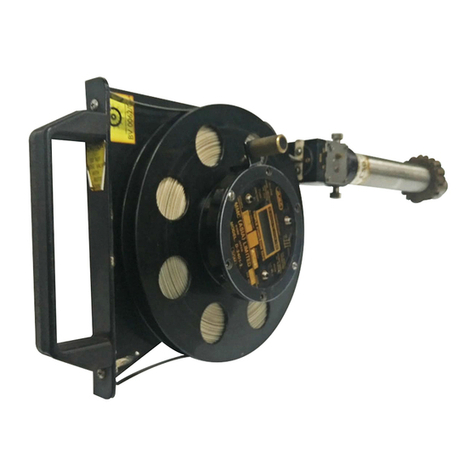
3.0.6 It is important not to attempt calibration of the unit when the sensor is in a petroleum
tank, or in other than a normal air environment. It is also desirable to perform the
calibration at room temperature (70 to 80 degrees F). The later condition is not a
requirement, but will in general, results in greater accuracy. Although the sensor is
temperature compensated to provided minimum error for temperature change, sudden
large temperature shifts may cause errors of approx. 0.3% unless the sensor is given time
to recover and temperature stabilize.
3.0.7 In operation and as the oxygen sensor descends into a lower oxygen gaseous
environment, such as that contained in a petroleum tank with inert gas, the output current
from the sensor decreases causing the hub amplifier to linearly experience a lower input
voltage. Digital output to the display is then also decreased. This voltage after
conditioning will be proportionally displayed at the correct lower oxygen percent level
encountered.
3.0.8 Normally, and if left unattended in air after power is applied, timing circuits within the
hub assembly will permit the system to remain on for approx. 5 minutes and then will
automatically turn the power off. However when lowered into a gaseous environment
containing less than 18% oxygen, an internal voltage comparator senses this condition
and prevents the units from turning off until it is once again exposed to a normal air
environment. There after, approximately one minute of additional on power is permitted
before the unit automatically turn-off during a measurement cycle
3.0.9 The alarm circuit within the hub consists of 18% oxygen level comparator described
above, an 8% comparator, a red lamp (LED) and horn as visual and audible alarm
indicators, with other ancillary electronic circuits
3.0.10 When the sensor is powered in a normal air environment, the oxygen level is well above
the 8% level and the red LED lamp on the faceplate will slowly flash. The horn is silent.
If the sensor is now lowered into a tank which contains an oxygen level below 18% but
above 8%, the horn will now emit a pulsating audible tone and the red lamp will then to
flash, at a rapid rate. Below 8% the horn will be silent and the red LED will extinguish.
To Summarize:
Above 18%………………………Lamp slowly Flashes, Horn Silent(Power on indicator)
From 8% to 18%…………………Lamp Rapidly Flashes, Horn Sounds
Below 8%………………………...Lamp off, Horn Silent
3.0.11 As can be seen from the above table, during an above acceptable level of oxygen
contents, both red LED and horn are off. In addition, the action of the red Led is explained as
follows:




























